#CornellRAD
Photo

Today, we're talking about a different kind of voting! The midterms are coming up this November, but you need to register to be able to vote! Even though it's not a presidential election, every election needs to hear from you. Exercise your American right this November by celebrating #NationalVoterRegistrationDay with us. Click here to register: https://www.vote.org/register-to-vote/ #CornellRAD #Vote #RegisterToVote #LaborArchives #LaborHistory #ArchivesOfInstagram #MidtermElections @cornell_library @cornellilr https://www.instagram.com/p/Ciuyf6HuVeV/?igshid=NGJjMDIxMWI=
#nationalvoterregistrationday#cornellrad#vote#registertovote#laborarchives#laborhistory#archivesofinstagram#midtermelections
4 notes
·
View notes
Text
Seed Saver
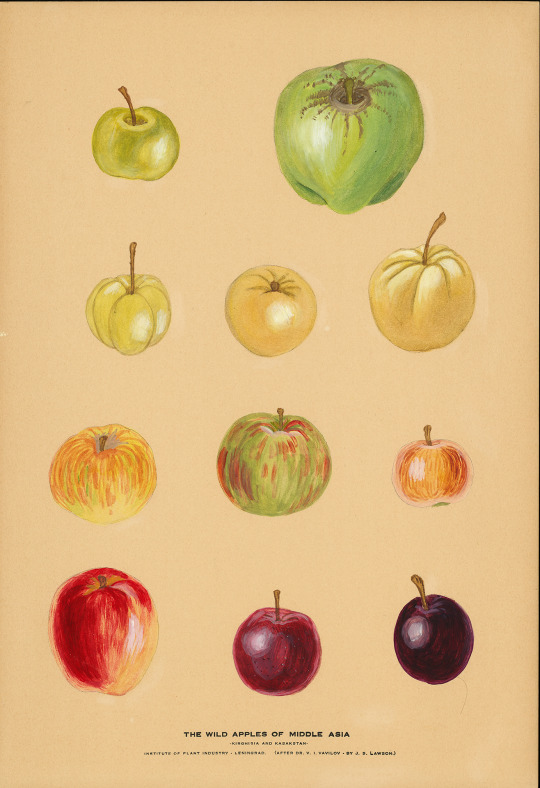
Wild Apples of Middle Asia, produced by J.S. Lawson from field drawings made by Nikolai Vavilov (1 of 6 plates donated to Cornell professor of horticulture Richard Wellington by Nikolai Vavilov during the 6th International Genetics Conference held in Geneva, N.Y. in 1932; For an online look at the complete illustration set, please visit the Biodiversity Heritage Library at bit.ly/vavilov-apples).
The rare and distinctive collections vault at Mann Library houses hand-colored prints of wild apples and pears that tell an extraordinary story. The wild fruit specimens depicted were collected in Central Asia and the Caucasus by the Russian plant scientist Nikokai Vavilov (1887-1943) and his team of botanist colleagues over the course of extensive plant-finding expeditions during the early decades of the 1900s. These illustrations provide a full color glimpse of the intrepid work undertaken by a pioneering life scientist to advance food security in Russia and the world beyond. Sadly, Nikolai Vavilov’s was a brilliant career that was cut brutally short. January 26th marks the anniversary of Vavilov’s death at fifty-five in a Soviet prison in Saratov, Russia. We post this piece today in profound esteem for his inspiring legacy.

During his all-too-brief life, Nikolai Vavilov advanced the knowledge of genetics and plant science in innumerable ways—in both lab and field. His work on genetic homology led to the formulation of scientific law, while his expeditions to remote parts of the world both founded the largest seed bank of his time and traced the origins of numerous crop species.
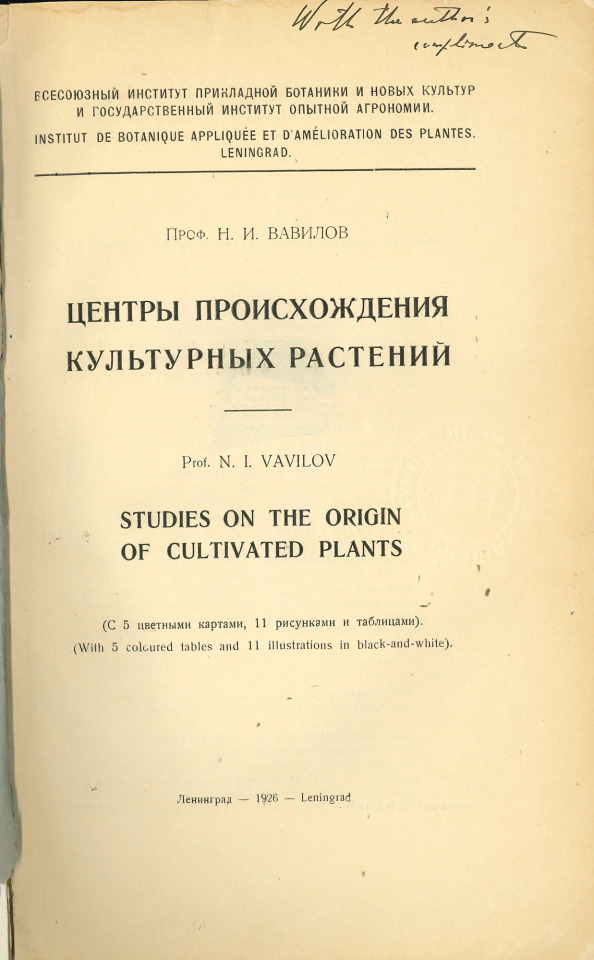
Original Russian edition of N.I.Vavilov’s Studies on the Origin of Cultivated Plants, Leningrad, 1926, donated to Cornell University by the author. The work was widely acclaimed by the world’s plant scientists for establishing the geographical origins of major food crops.
Born in 1887 just west of Moscow, Vavilov became an international star of Soviet science in the 1920s. He traveled widely, not just to collect specimens but to collaborate and share ideas with fellow scientists around the world. In 1932 Vavilov came to Ithaca to participate at the 6th International Congress on Genetics, hosted at Cornell University.

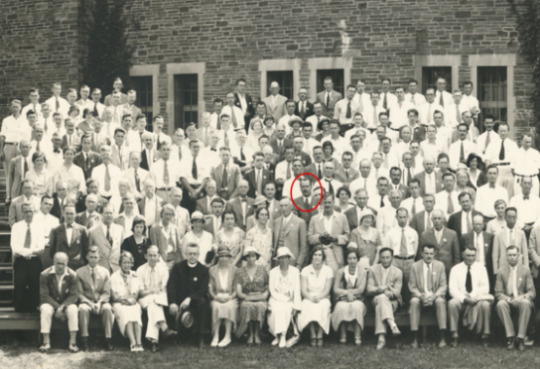
The Sixth International Congress on Genetics, Cornell University, 1932; excerpt shows Nikolai Vavilov among his international colleagues.
He wasn't here simply to lecture, though; afterwards, writing for a Soviet audience, he made effort to bring what he learned in Ithaca to the USSR. An excellent example is what Vavilov wrote about Dr. Barbara McClintock, who was researching maize genetics at Cornell:
"For our understanding of chromosomes, the star exhibit was the work of the young assistant to Cornell University, Miss McClintock. She displayed her remarkable preparations of corn chromosomes, allowing one to see the chromosomes' internal structure. This new technique made it possible to visually distinguish chromosomes, and to identify discrete chromosomal regions. Her astute understanding of the genetic background of corn could be seen by looking at the maps she created. These maps charted the distribution of genes over cytological scans, making it possible to connect the internal structure of the chromosome with the external phenomena of the genes. Miss McClintock was able to capture the conjugation of non-homologous chromosomes, and map the chromosomal sectioning of corn. This discovery is of huge significance, as all modern conceptions of genetics are based on the assumption that only homologous chromosomes conjugate."
(Written by N. I. Vavilov for the All-Soviet Academy of Agricultural and Rural Sciences in the name of Lenin: Institute of Applied Botany of USSR, available online in Russian at the All-Russian Research Institute of Plant Genetics. Translated to English by Anya Osatuke)
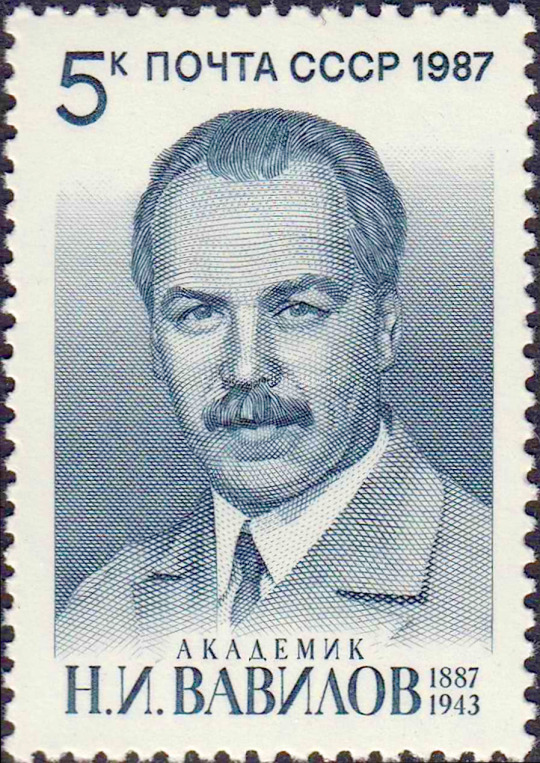
Unfortunately, the 1932 Genetics Congress in Geneva, N.Y. was the last the world outside of Russia would see of Nikolai Vavilov. By the 1930’s, Vavilov’s line of research in plant genetics had fallen deeply out of favor with the Stalin regime, which sought to purge Soviet institutes of science from any scholarship that argued with principles of Lysenkoism, a doctrine of the Soviet era—since de-bunked—that rejected Mendelian genetics and asserted an inexorable passing along of environmentally-influenced traits from all organisms to their offspring. Increasingly pressured by the Stalin government and hedged out by ideological pseudo-science, Vavilov was barred from travel until his arrest in 1940. Three years later, he perished imprisoned, likely from starvation.
By the early 1950s, the political tides in the Soviet Union were turning. Soviet science under the regime of Nikita Kruschev slowly abandoned Lysenkoism. In 1987, a celebration marked the official rehabilitation of Vavilov and his scientific contributions in the eyes of the Soviet government. A postage stamp was issued in Vavilov’s honor and a collection of his papers on food crop origins was published, with an English translation produced five years later and reissued in 1997. Today, Russia’s premier institute for genetics research bears Vavilov’s name: the Vavilov Institute of General Genetics in Moscow. And the institute that Vavilov founded over a century ago, the Institute for Plant Genetic Resources in St. Petersburg, which keeps a collection of seeds of thousands of food plant varieties and has an extraordinary story of its own to tell, continues to be a world renowned center for the preservation of agrobiodiversity.
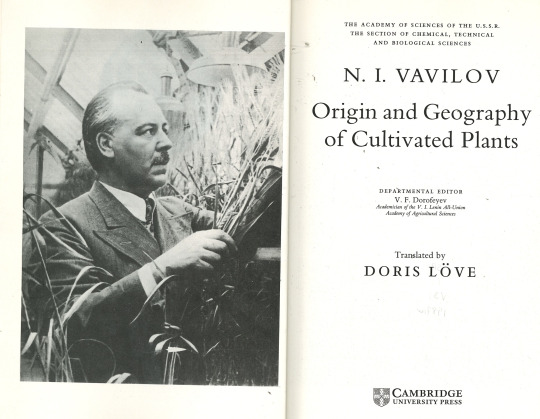
The important story of Nikolai Vavilov is discussed in more detail in the exhibit Cultivating Silence: Nikolai Vavilov and the Suppression of Science in the Modern Era, which opened in the Mann Library lobby in October 2021 and can now also be viewed at exhibits.library.cornell.edu/cultivating-silence.
#vaults of mann#CornellRAD#vavilov#botany#science history#agricultural history#agriculture#plant science#Cornell University Library
21 notes
·
View notes
Photo

RT @evangelestia: Thank you to all who attended the #CornellRAD Webinar: "When White Libraries Happen to Black Collections", October 19, 2020. For those of you who missed the event here is a link to the recording. #BLKCollectionsMatter https://t.co/f2L0ckuKt9 2PLAN22 http://twitter.com/2PLAN22/status/1319075036037304322
Thank you to all who attended the #CornellRAD Webinar: "When White Libraries Happen to Black Collections", October 19, 2020.
For those of you who missed the event here is a link to the recording. #BLKCollectionsMatter https://t.co/f2L0ckuKt9
— Tamar Evangelestia-Dougherty (@evangelestia) October 21, 2020
0 notes
Text
Labor Organizer Spotlight, Charles S Zimmerman
#LaborOrganizerSpotlight Charles S. Zimmerman
Charles Sasha Zimmerman was born in Russia in 1897. He arrived in the United States in 1913 and soon found work in garment shops. His career with the ILGWU began in 1916 when he went to work in a waist shop and joined Local 25. By 1925, Zimmerman was a member of the Executive Board for Dressmakers' Local 22. Throughout the 1920s, Zimmerman was an active member of the Communist Party, an affiliation that cost him his leadership positions within the union in 1925. He was involved with the bitter Communist infighting, and though he initially belonged to the Communist Party, he soon saw that they subverted the strike of 1926 for its own purposes which nearly decimated the ILGWU. With other members now opposed to Communism, Zimmerman worked to rid the Communist influence from the union and help reorganize the dress industry with his reinstatement in 1931. Even after his reinstatement in the ILGWU, he maintained close ties with the anti-Stalinist Lovestonites of the Communist Party.
Zimmerman was elected manager of Local 22 in 1933, and the next year became a vice president of the ILGWU. He became general manager of the New York Dress Joint Board and the Dressmakers' Joint Council in 1958. Zimmerman was involved with civil rights, social welfare and international labor organizations throughout his career. He was a trustee of the National Urban League, chairman of the Jewish Labor Committee's National Trade Union Council for Human Rights, and a member of New York City's first Human Rights Commission. Zimmerman helped found the Inter-American Federation of Textile and Garment Workers in 1966 and served as a U.S. representative to the International Textile, Garment and Leather Workers Federation. In 1969, Zimmerman was elected president of the Jewish Labor Committee and named to the Civil Rights and Social Security committees of the AFL-CIO. He resigned as a union vice president and general manager of the Dress Joint Council and New York Dress Joint Board in 1972. Zimmerman died in 1983.
Each #LaborOrganizerSpotlight is designed to highlight historical figures who have participated significantly in the labor/labor organizing movement who are also featured in our collections. To learn more about Charles Zimmerman visit https://rare.library.cornell.edu/finding-aids-for-archival-and-manuscript-collections/ and search #5780/014 P.

A photo of Charles Zimmerman.

Charles Zimmerman, Luigi Antonini, and David Dubinsky in Labor Day parade, 1960.
#cornellrad#kheelcenter#cornell university#laborhistory#ilgwu#archives#history#laborarchives#laboractivist#socialwelfare#civilrights#internationallabor#charleszimmerman#jewish#daviddubinsky#luigiantonini
1 note
·
View note
Photo
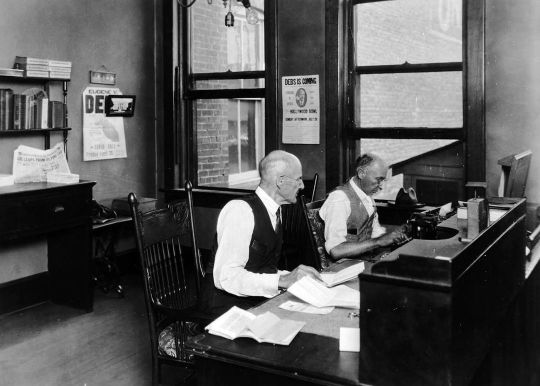
Labor Organizer Spotlight: Eugene Debs ✨ Born and reared in Terre Haute, Indiana, Debs began work in a railroad enginehouse and then became a locomotive fireman, serving as an officer of the Brotherhood of Locomotive Firemen and Enginemen and as editor of the FIREMEN'S MAGAZINE. Resigning from his union offices in 1892, Debs organized the American Railway Union along industrial lines. The ARU was crushed in the Pullman Strike of 1894 and Debs was convicted of conspiracy and jailed for six months. In 1897, Debs helped to form the Social Democratic Party, which merged with a faction of the Socialist Labor Party to form the Socialist Party of America in 1901. One of the founders of the Industrial Workers of the World in 1905, Debs withdrew from that organization three years later. Debs ran for president of the United States on the Socialist ticket in five elections between 1900 and 1920. An opponent of American involvement in World War I, Debs was convicted of violating the Espionage Act in 1918 and was sentenced to a ten year prison term. Commuted by President Warren G. Harding in 1921, Debs died in 1926. #CornellRAD #LaborArchives #LaborHistory #ArchivesOfInstagram #KheelCenter #ILRSchool #LaborRights #Strikes #WorkingWednesday #IWW #IndustrialWorkersOfTheWorld #LaborOrganizerSpotlight @Cornell_Library @CornellILR @ILRSchool @CornellTextileIndustry @CornellFashionCollection https://www.instagram.com/p/CnSYHwspzEc/?igshid=NGJjMDIxMWI=
#cornellrad#laborarchives#laborhistory#archivesofinstagram#kheelcenter#ilrschool#laborrights#strikes#workingwednesday#iww#industrialworkersoftheworld#labororganizerspotlight
0 notes
Photo
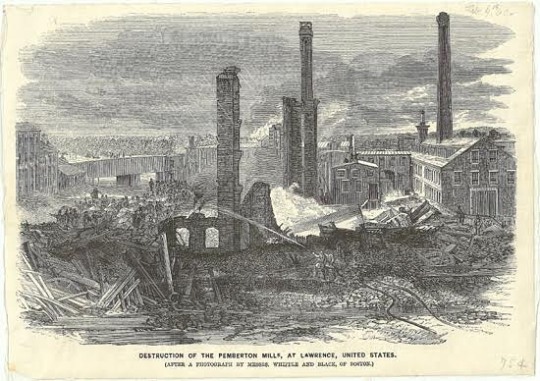
#OnThisDay January 10, 1860 the Pemberton Mill in Lawrence, MA collapsed, becoming the worst industrial accident in Massachusetts history. Between 90 and 145 people were killed and another 166 were injured. The mill was five stories high and was built by the Essex Company before being sold to George Howe and David Nevins in 1857 who put even more machines in the factory to boost profits. At the time of the collapse, the mill turned a profit of $1.5 million a year for its owners. When it collapsed, the mill had 800 workers, mostly women and children, inside. Rescuers helped more than 200 people out of the building, but between 9:30-10pm a lantern held by a rescuer broke and a fire broke out in the rumble. It was reported at the time that 14 people were burned to death as a result. A jury found architect Charles Bigelow responsible for the collapse because he allowed malformed cast-iron columns to be used. However he argued the original owners were at fault and he just used the material they provided. In the end, he did not go to prison, and no one received any sort of punishment for the disaster. #CornellRAD #LaborArchives #LaborHistory #ArchivesOfInstagram #KheelCenter #ILRSchool #LaborRights #Strikes #WorkingWednesday #PembertonMill #Massachusetts @Cornell_Library @CornellILR @ILRSchool @CornellTextileIndustry @CornellFashionCollection https://www.instagram.com/p/CnPgTYcu7I5/?igshid=NGJjMDIxMWI=
#onthisday#cornellrad#laborarchives#laborhistory#archivesofinstagram#kheelcenter#ilrschool#laborrights#strikes#workingwednesday#pembertonmill#massachusetts
1 note
·
View note
Photo
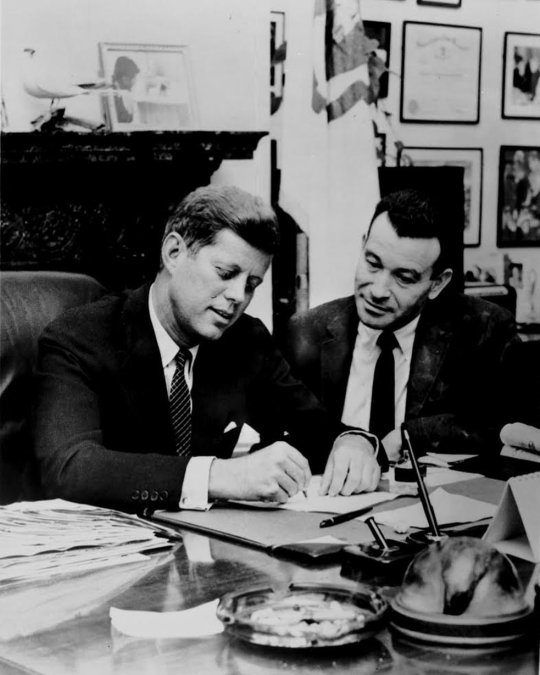
Happy Birthday to former president of the International Ladies Garment Workers Union, Sol "Chick" Chaikin! Chaikin served as the President of the ILGWU from 1975 to 1986. As stated by a New York Times Article, Chaikin "sought to raise public awareness of the loss of jobs to foreign competition". He also led a fight to find and eliminate sweatshops in New York's Chinatown and elsewhere that employed recent immigrants, many of them illegal, at substandard wages. #CornellRAD #LaborArchives #LaborHistory #ArchivesOfInstagram #KheelCenter #ILRSchool #LaborRights #Strikes #WorkingWednesday #ILGWU #InternationalLadiesGarmentWorkersUnion @Cornell_Library @CornellILR @ILRSchool @CornellTextileIndustry @CornellFashionCollection https://www.instagram.com/p/CnM7gz2O5n1/?igshid=NGJjMDIxMWI=
#cornellrad#laborarchives#laborhistory#archivesofinstagram#kheelcenter#ilrschool#laborrights#strikes#workingwednesday#ilgwu#internationalladiesgarmentworkersunion
0 notes
Photo

Labor Organizer Spotlight✨: Clara Lemlich Clara Lemlich Shavelson (1886-1982) forced union leaders to acknowledge the importance of female workers in the labor force. Through her work in the ILGWU, she organized women, arguing that female workers were essential to ensuring successful outcomes of striking. After an invigorating speech at Cooper Union, the Shirtwaist Strike of 1909 was set off, dubbed the 'Uprising of the 20,000'. At that time, it was the largest strike by women workers. Following being blacklisted from factory work for some time, she returned to fight cost of living issues. Lemlich helped found what became the Progressive Women's Council, and continued her activism until her final years, organizing the attendants at her nursing home. Interested in learning more? Come explore the Kheel Center's extensive collections on Clara Lemlich, other labor organizers, and much more. We will be reopening from the holidays for in-person assistance beginning January 9th. #CornellRAD #LaborArchives #LaborHistory #ArchivesOfInstagram #KheelCenter #ILRSchool #LaborRights #Strikes #WorkingWednesday #ILGWU #ClaraLemlich @Cornell_Library @CornellILR @ILRSchool @CornellTextileIndustry @CornellFashionCollection https://www.instagram.com/p/Cm_8rYnLpRZ/?igshid=NGJjMDIxMWI=
#cornellrad#laborarchives#laborhistory#archivesofinstagram#kheelcenter#ilrschool#laborrights#strikes#workingwednesday#ilgwu#claralemlich
0 notes
Photo
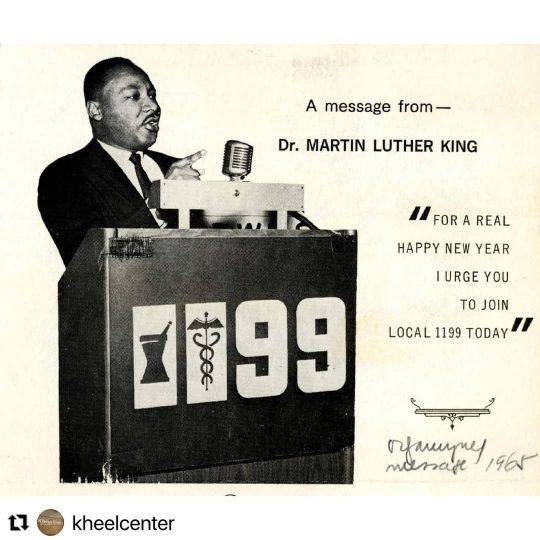
Happy New Year from the Kheel Center! Here’s a holiday/union membership card from our Local 1199 collection with an important message from the late Dr. Martin Luther King Jr.: "For a Real Happy New Year, I Urge You to Join Local 1199 Today." @1199seiu @seiu1199 #Repost @kheelcenter with @use.repost Item 5206sb30f07, Coll. 5206s - Local 1199 Executive Secretary Moe Foner Records #KheelCenter #ILR #CornellUniversity #LaborHistory #CornellRAD #LaborArchives #2023 #HappyNewYear #MLK #MartinLutherKing #MartinLutherKingJr #ILRSchool
#repost#kheelcenter#ilr#cornelluniversity#laborhistory#cornellrad#laborarchives#2023#happynewyear#mlk#martinlutherking#martinlutherkingjr#ilrschool
0 notes
Photo

"Triangle Factory Owners found Not Guilty" -- #OnThisDay December 27, 1911 after a 23-day trial, Isaac Harris and Max Blanck, "Shirtwaist Kings", who owned the Triangle Factory, are found not guilty of Murder in the death of 146 workers. The task of the jurors had been to determine whether the owners knew that the doors were locked at the time of the fire. Customarily, the only way out for workers at quitting time was through an opening on the Green Street side, where all pocketbooks were inspected to prevent stealing. Worker after worker testified to their inability to open the doors to their only viable escape route, the stairs to the Washington Place exit, because the Greene Street side stairs were completely engulfed by fire. More testimony supported this fact. Yet the brilliant defense attorney Max Steuer planted enough doubt in the jurors' minds to win a not-guilty verdict. Grieving families and much of the public felt that justice had not been done. "Justice!" they cried. "Where is justice?" Twenty-three individual civil suits were brought against the owners of the Asch building. On March 11, 1914, three years after the fire, Harris and Blanck settled. They paid 75 dollars per life lost. In August of 1913, Max Blanck was charged with locking one of the doors of his factory during working hours. Brought to court, he was fined twenty dollars, and the judge apologized to him for the imposition. In December of 1913, the interior of his factory was found to be littered with rubbish piled six feet high, with scraps kept in non-regulation, flammable wicker baskets. This time, instead of a court appearance and a fine, he was served a stern warning. The Triangle Waist Company was to cease operations in 1918, but the owners maintained throughout that their factory was a "model of cleanliness and sanitary conditions," and that it was "second to none in the country." Pictured: Max Blanck and Isaac Harris, Triangle Waist Company owners in a group portrait, possibly with Triangle factory workers and visitors. #5780P #ILGWU #Whoisguilty #TriangleFire #LaborHistory #CornellUniversity #ILR #CornellRAD #KheelCenter
#onthisday#5780p#ilgwu#whoisguilty#trianglefire#laborhistory#cornelluniversity#ilr#cornellrad#kheelcenter
0 notes
Photo
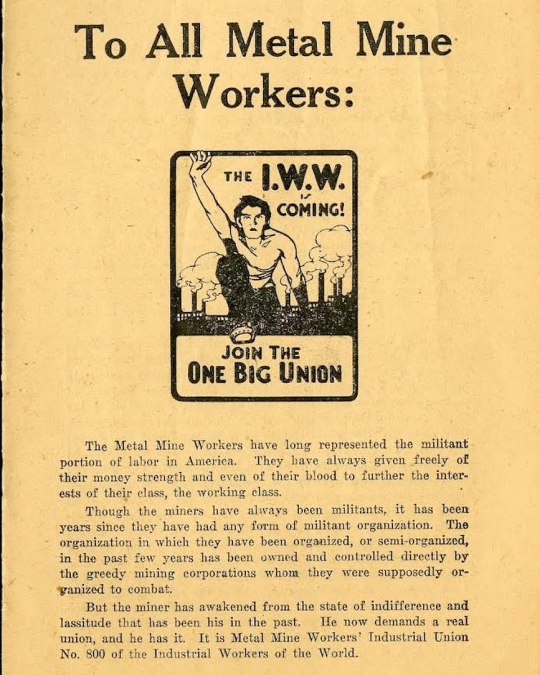
Dating from the late 1910s to early 1920s from one of the United States’ more militant unions, this pamphlet provides insight into the organizing efforts of the Industrial Workers of the World. This item was found in our Western Federation of Miners International Mine, Mill and Smelter Workers Records, Collection 5268. Learn more about all that the IWW did by taking a look at our extensive collections! The Kheel Center will be closed from 12 PM on Friday, the 23rd and will reopen in person on January 9th. #ArchivesSparkle #ArchivesHashtagParty #CornellRAD #LaborArchives #LaborHistory #KheelCenter #ILRSchool #CornellUniversity #IWW #IndustrialWorkersOfTheWorld
#archivessparkle#archiveshashtagparty#cornellrad#laborarchives#laborhistory#kheelcenter#ilrschool#cornelluniversity#iww#industrialworkersoftheworld
0 notes
Photo

The month isn't over yet, and to honor the theme ✨#ArchivesSparkle ✨ for #ArchivesHashtagParty, here's a gold bond certificate issued by the International Ladies Garment Workers Union from 1928, found in our ILGWU Gold Bond Certificates collection! The ILGWU rallied thousands of, mainly immigrant, women of various skill levels, becoming the first union to negotiate an unemployment compensation fund as well as create an extensive healthcare program for its members. They made several efforts to increase the education levels of their members, including an Education Department offering courses in US citizenship, the English language, as well as union techniques. Learn more about all that the ILGWU did by taking a look at our extensive collections! The Kheel Center will be closed starting at 2 PM on Friday, and will reopen for in-person assistance January 9th.
#archivessparkle#archiveshashtagparty#cornellrad#laborarchives#laborhistory#kheelcenter#ilrschool#cornelluniversity#ilgwu#internationalladiesgarmentworkersunion
1 note
·
View note
Photo
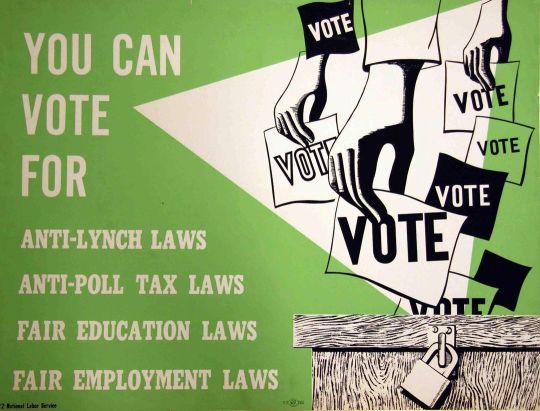
Today is the day to vote! Exercise your right today. Here's a poster showing topics that were discussed about voting in the 70's. How have--or haven't--our ballots changed since then? We'll be looking out for everyone's "I Voted" stickers today! Visit us to see our poster collection! This is from collection 6227 G. Schedule an appointment today! #CornellRAD #LaborArchives #ArchivesOfInstagram #ElectionDay #Voting #LaborRights #ballot #IVoted #poster #history @cornell_library @CornellILR https://www.instagram.com/p/CktFFcYLAEr/?igshid=NGJjMDIxMWI=
#cornellrad#laborarchives#archivesofinstagram#electionday#voting#laborrights#ballot#ivoted#poster#history
0 notes
Photo

We wanted to pull up a seat to the #ArchivesHashtagParty and take a look at the #ArchivesMenu...but oops, we're the ones serving! Our Hotel Employees and Restaurant Employees International Union collection has many records like this one, giving workers union buttons. Schedule an appointment to come see our HERE Historical Files, collection number 6199/013 to see these amazing records! Or, contact us for a duplication. #CornellRAD #LaborArchives #UNITEHERE #LaborUnions #Unionize #FoodService #UnionLabel #buttons @Cornell_library @cornellilr @usnatarchives https://www.instagram.com/p/CkiepQauUwS/?igshid=NGJjMDIxMWI=
#archiveshashtagparty#archivesmenu#cornellrad#laborarchives#unitehere#laborunions#unionize#foodservice#unionlabel#buttons
0 notes
Photo
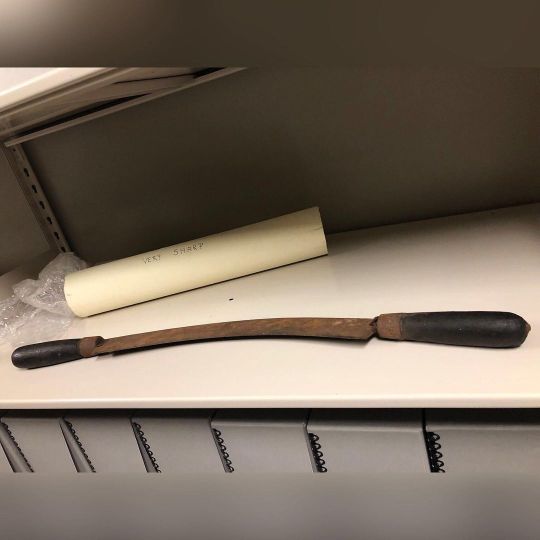
"It's a flesher's knife! With a handle on either side, a worker uses this knife in the fur or leather industry. This one has seen plenty of work! Thanks for playing along. We hope you enjoy your Halloween and stay safe! You can find the finding aid for this record in our Herbert Turkel Collection of a Fur Worker's Flesher's Knife, Memorabilia, collection number 6214 MB. . . #CornellRAD #LaborArchives #HappyHalloween #Tanning #Fur #ArchivesOfInstagram #Mystery #Haunted #Knife @Cornell_library @cornellILR" (at Kheel Center for Archives) https://www.instagram.com/p/CkY9baep_DY/?igshid=NGJjMDIxMWI=
0 notes
Photo

We found a spooooky tube by itself on one of our shelves. What could it be?! Is it haunted?? Is it scary?! Comment below what you think it could be! Later today we'll post what's inside! . . #CornellRAD #LaborArchives #HappyHalloween #ArchivesOfInstagram #Mystery #Haunted @cornell_library @cornellILR (at Kheel Center for Archives) https://www.instagram.com/p/CkYZ_CyuOn-/?igshid=NGJjMDIxMWI=
1 note
·
View note